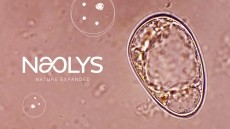Scientific evidence jumps to the defense of nanotechnology
products has been given new fuel as scientists in France reveal
that nanotechnology has been in use for thousands of years in hair
dye.
Although the ancient Egyptians didn't know it, they were using lead-based chemistry to develop lead sulfide (PbS) nanocrystals with a diameter of 5nm more than 4000 years ago, according to latest research carried out at the Centre de recherché et de restauration des musées de France, based in Paris.
"For thousands of years, cosmetics have been used and were made by the judicious combination of naturally available minerals with oils, various creams, or water," said Dr. Phillipe Walter research team leader.
" Since the Greco-Roman period, organic hair dyes obtained from plants such as henna have been used, but other unusual formulas based on lead compounds, such as the recipes describing several methods to dye hair and wool black, were also common. It is remarkable that these Greco-Roman techniques have been used up to modern times."
This evidence suggests that nanotechnology was unknowingly incorporated into cosmetic formulations for at least the past 2,000 years.
Indeed, although lead-based compounds are now outlawed from all cosmetics formulations, hair dye is the exception, with many formulations still containing lead-based chemicals. This evidence might help to further sway the industry's stand concerning the debate of whether nanoparticles in sunblock, toothpaste and other cosmetic formulations are safe.
Dr. Walter's research has been aided by the institute's scientific research team, which, in collaboration with the Laboratoire d'etude des microstructures from the French national aerospace research centre and L'Oreal Research, has shown that an ancient dyeing process for black hair is an illustration of synthetic nanoscale biomineralization.
Dr. Walter points out that the ancient dyeing process is a prime illustration of synthetic nanoscale biomineralization - a process that is thought to have been pioneered more than 2,000 years ago with low-cost natural materials.
Replicating a lead-based formulation for hair dye that dates back to this period, the researchers said that they found treated hair contained PbS nanoparticles inside the hair follicles.
Furthermore, the scientists showed that, at 5nm, the PbS particles in the hair cortex were even smaller than the melanin clusters that help to give hair its natural hair color.
The scientists say that ultimately this evidence might enable them to better control the conditions for growth and organizations of nanoparticles, which might ultimately open up new perspectives on the development of nanocomposites.









![Youthtopia is a pre-ageing skin care line powered by upcycled apples. [Origins]](/var/wrbm_gb_food_pharma/storage/images/_aliases/wrbm_tiny/publications/cosmetics/cosmeticsdesign-asia.com/headlines/brand-innovation/origins-s-youthtopia-highlights-powerful-potential-of-upcycled-beauty-ingredients/17746852-1-eng-GB/Origins-s-Youthtopia-highlights-powerful-potential-of-upcycled-beauty-ingredients.jpg)





